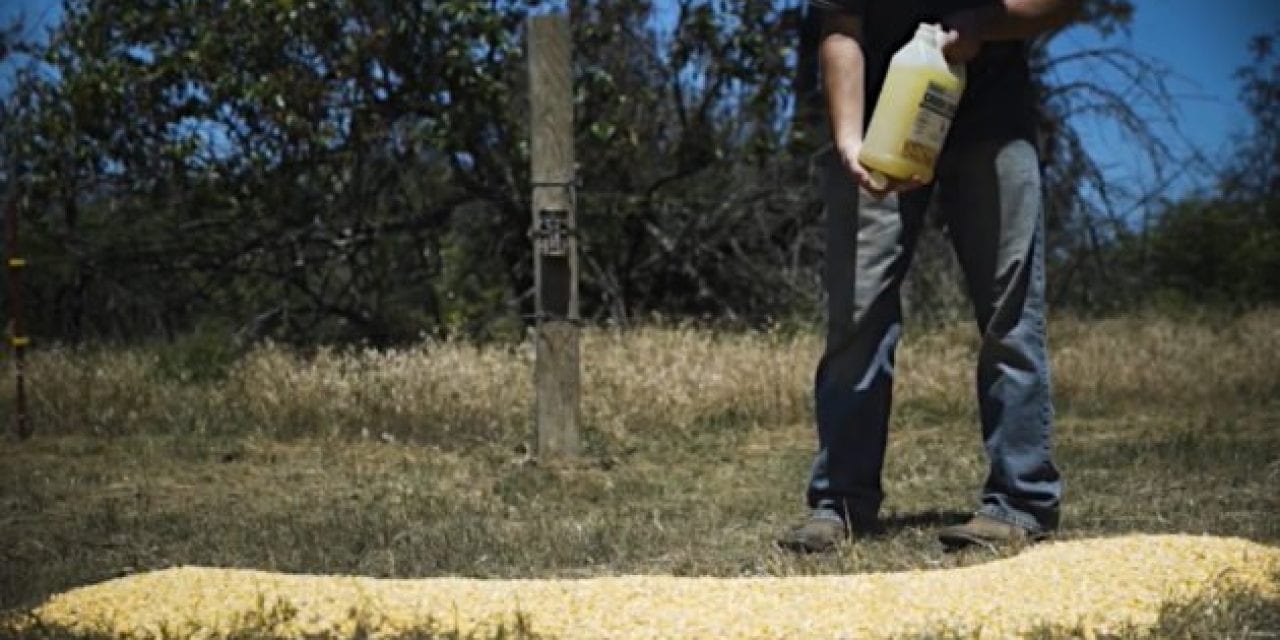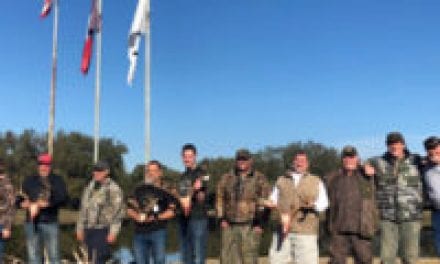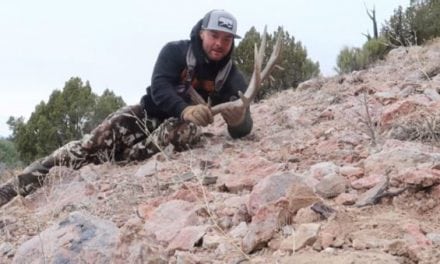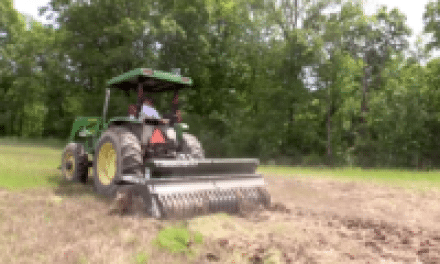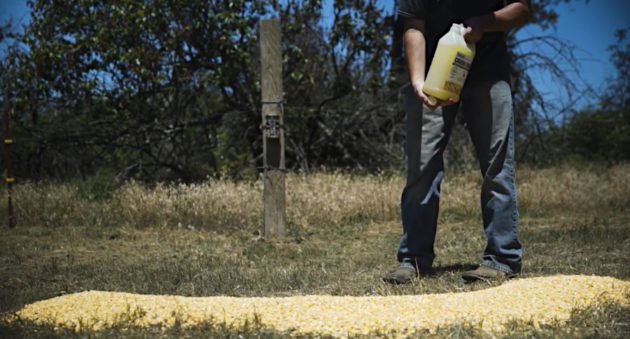
Is baiting for big game more effective or ethical?
Perhaps no other topic in the hunting world is more polarizing than the debate over baiting vs. not baiting. Hunters have been debating the ethics and fair chase principles of using a pile of corn or other food to lure in your quarry for decades now. Most in the hunting community seem to have firmly entrenched themselves into their chosen position on the matter and are there for the long haul.
It had us wondering are there merits to both sides of the discussion? Is baiting for big game more effective than natural food in some areas than others? Does baiting really alter deer movement?
We will attempt to look at both sides of this argument today as we debate the merits of using a bait site vs. using other methods to attempt to achieve a successful big game harvest.
Baiting Examples
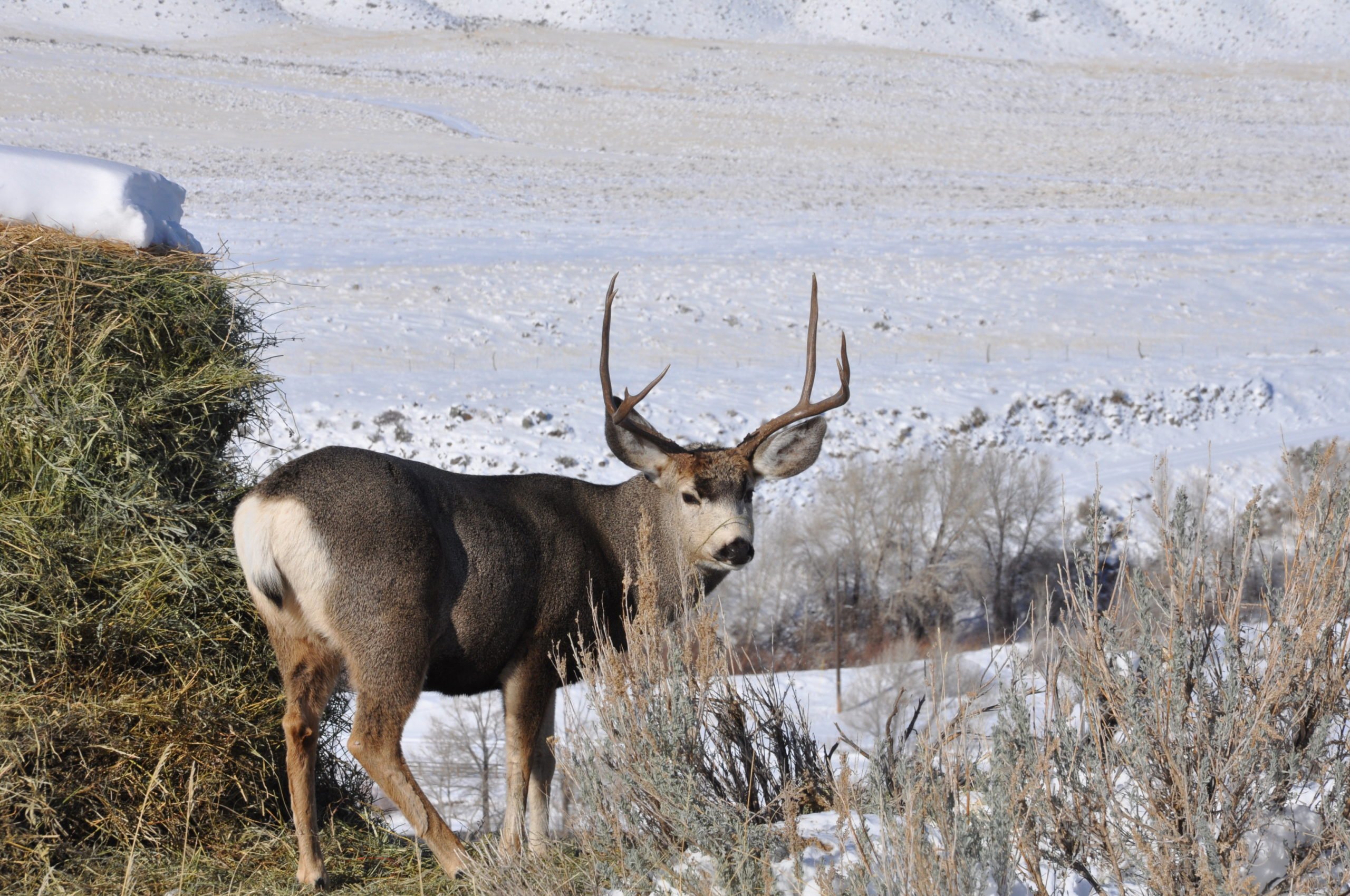
When most hunters think of baiting, they are likely thinking about deer baiting. The other two main examples of hunters using bait are for bears and feral hogs. The rules on bait piles vary wildly depending on the state and your Department of Natural Resources. Most agencies group baiting and supplemental feeding of deer as the same thing. Here in Michigan, hunters are limited to two gallons to bait deer. Any more than that and you risk a ticket. In many parts of the state, baiting is no longer legal at all. We will get more into that later.
Bait for deer and hogs usually consists of shelled corn, but may also contain apples, sugar beets, hay, leftover Halloween pumpkins and more. In some states, mineral licks and commercial food blocks also get grouped in here.
For black bears, the type of bait varies even more because the animals are omnivores. Many hunters use doughnuts and other pastries, bread, sugar, chicken, cereal and more. Many states and provinces have started to regulate what hunters can use out of concern of health for the animals. For instance, a few states have outlawed the use of chocolate. The bigger point here is that baiting for deer and hogs is drastically different from bears.
The advantages of using bait
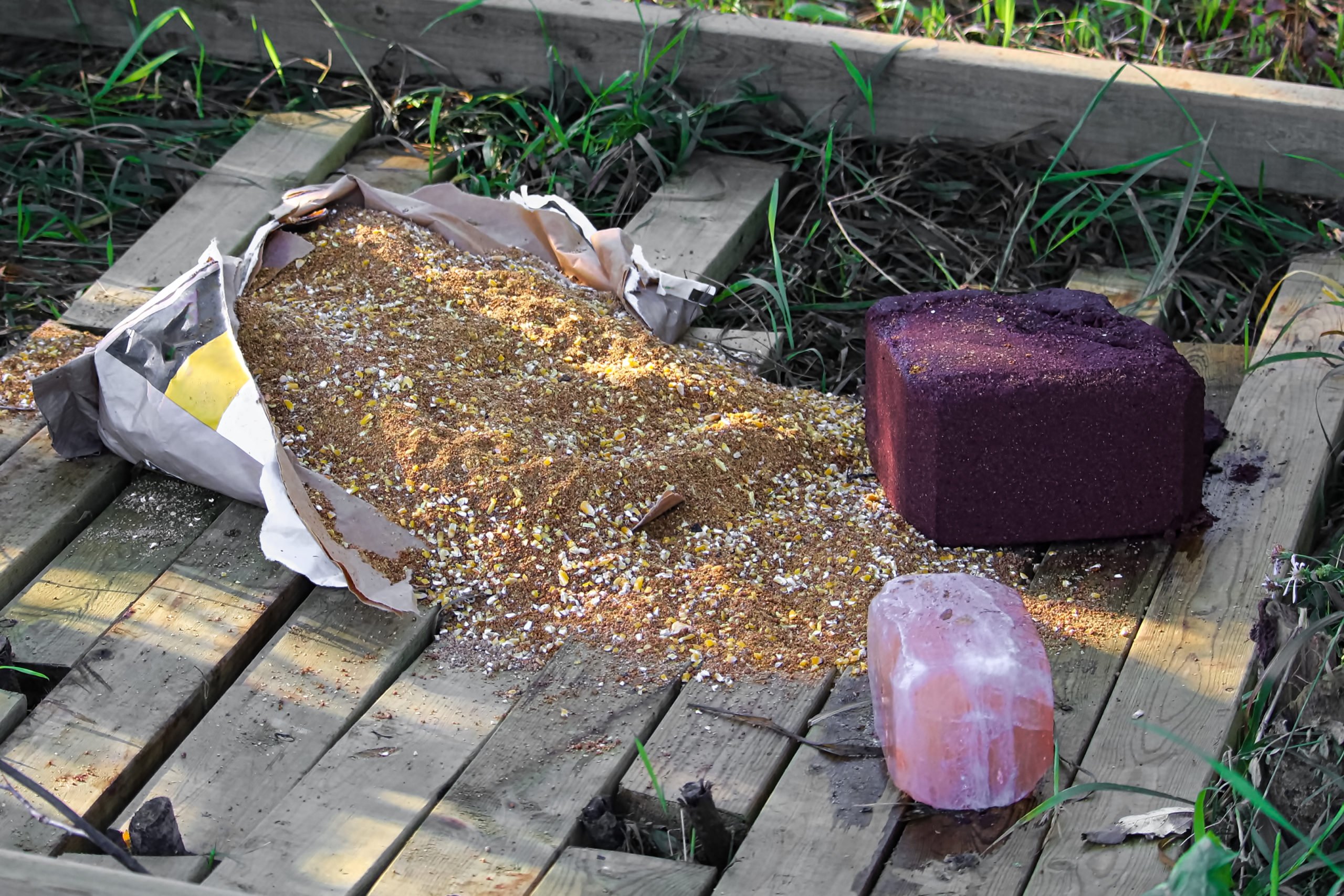
Full disclosure, I have used bait for hunting whitetail deer on private land in the past in southern Michigan. However, that was many, many years ago and I have moved away from it since, especially since it is now not legal here. The biggest advantage of using bait is in shot placement. A bait pile is going to draw the animals into the perfect shooting lane and keep them still while you line up the shot. You can debate whether it is ethical to draw the deer in using an unnatural food source, but no one can argue that it does not make getting a clean kill shot easier.
Using bait is especially useful for younger hunters who are still learning the ropes. Bait allows the younger deer hunters to take their time and not feel rushed by trying to get a shot on a deer that may be gone from the area around the tree stand in a matter of seconds.
Bait also gives hunters plenty of confidence in their shots by knowing the exact distance to the bait station. It makes it easy to know exactly where you need to hold your bow or rifle to make the cleanest kill possible. No estimating the distance or having to pull a rangefinder beforehand.
In some big woods areas of the country like the more remote parts of Northern Michigan, Wisconsin and Minnesota, natural food sources may be limited. That makes finding the deer more difficult. In many cases it is easier to draw the deer to you with an attractant of some sort. That is also why bear baiting is more effective for hunting. A big bruin’s behaviors can be relatively unpredictable and spot and stalk hunting in dense brush is a dangerous and often difficult proposition. Baiting allows the hunter to control the situation.
Baiting can also help deer populations when it is used as supplemental feeding during the winter. Some parts of the country have snow on the ground for long periods of time and bait sites help the deer population get the necessary nutrients they need to survive a long, harsh winter.
One last benefit is to the economy. A while back, I wrote an article where I said baiting practices for deer hunting were starting to phase out in most parts of the country. It did not take long for a gas station owner in the northern part of my home state to email me and tell me about how Michigan’s newest baiting ban had hurt his business and they were fighting to stay afloat as a result. I had to admit, I had not thought about this negative impact beforehand. Many businesses in remote areas are make or break dependent on the sales of bait to help make ends meet every season.
Disadvantages of using bait
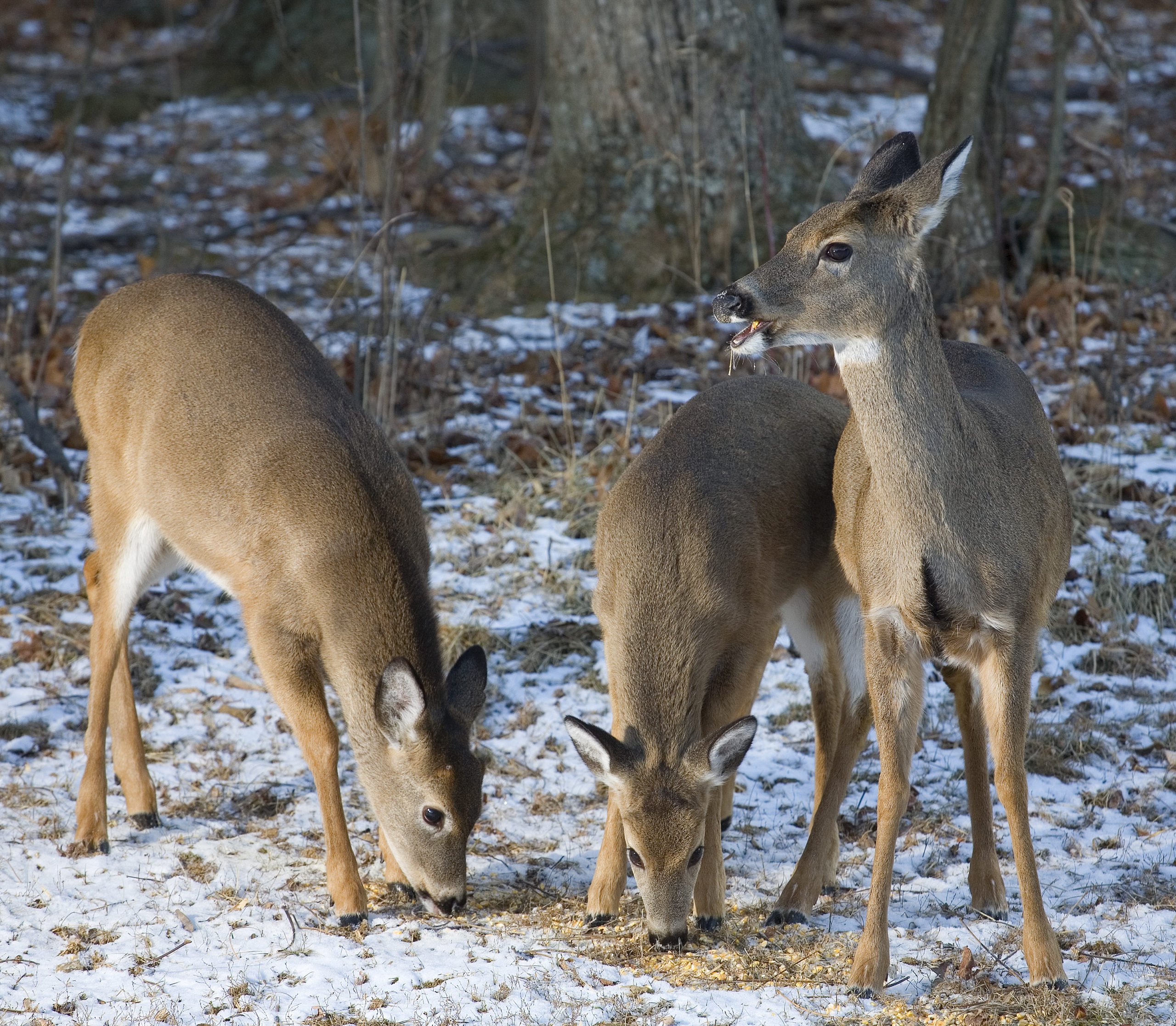
Hunter experience is going to vary depending on state, but my past experiences with bait left much to be desired. I only ever shot a single doe over a bait pile with a muzzleloader more than a decade ago. In my part of southwest Michigan, feeding deer seemed to do more harm than good. Trail camera photos confirmed that the mature bucks were avoiding the suspicious piles of food until well after dark. For both gun and bowhunting, that is not much of an advantage.
Granted, I have also talked to hunters in other states who have assured me that the only way they can put venison in the freezer season after season is to use bait. However, it seems like in high-pressure states like Michigan, it feels like all the deer movement on bait was well after legal shooting light. This probably has something to do with the intense amount of gun season pressure this state gets, but I cannot discount it as a negative. I started having far more deer sightings when I started concentrating on natural funnels and travel areas.
Another disadvantage is impact on your hunting area and the cost. To keep deer coming into your bait on a regular basis, you must keep refreshing it. That means refilling the bait every time they clean the spot out, which is often in most spots. Too much human activity in the area can make the animals wary to your presence and potentially push them to a neighbor’s land. Of course, there are options like mechanical feeders that can do this work for you, but they are expensive and for the hunter on a budget, they may not be an option at all. It may make more sense to place tree stands on likely travel routes and water sources.
The cost of bait is often ridiculous depending on where you source it. Over the course of a hunting season, those costs can add up quickly and back when baiting was still legal, I often wondered what the heck I was doing spending all this money only to have the deer eat all of it overnight. In a state like Texas, where animals are under less pressure and more apt to visit during daylight baiting deer makes more sense. Baiting is very much regional when it comes to the success of the tactic. A secondary frustration is the number of other animals that eat your bait like raccoons, squirrels, songbirds and more. I became frustrated several times when I discovered my trail camera filled with photos of raccoons and possums.
Bait sites are often not allowed on public lands either. That becomes a problem if there are not food plots or other natural food sources on the land and you are bowhunter. It means more work and more precise stand setups to ambush deer going to and from bedding areas or to feeding areas on private lands that are off-limits to the general public. There is also the possibility another hunter can find your bait pile and just start hunting it without asking your permission first. I have read many horror stories from hunters who returned to their public land bait sites only to find a fresh gut pile next to them. It does not get much more frustrating than that.
The biggest disadvantage to bait is simply the spread of disease. Many states have severely limited the kind of baiting that can be done to limit the spread of diseases like bovine tuberculosis or more commonly, chronic wasting disease or CWD. The latter is an always-fatal neurological disorder that wildlife biologists have found spreads via close contact between animals. Deer that become infected with it often become emaciated and lethargic. Many suffer for a long time before the disease finally kills them. A CWD discovery also leads to other major regulation changes like mandatory deer testing, checks and increased antlerless permits as state agencies try to control the spread in the deer herd. Most hunters in a CWD zone can attest to what a headache these procedures are.
Should you bait or not?
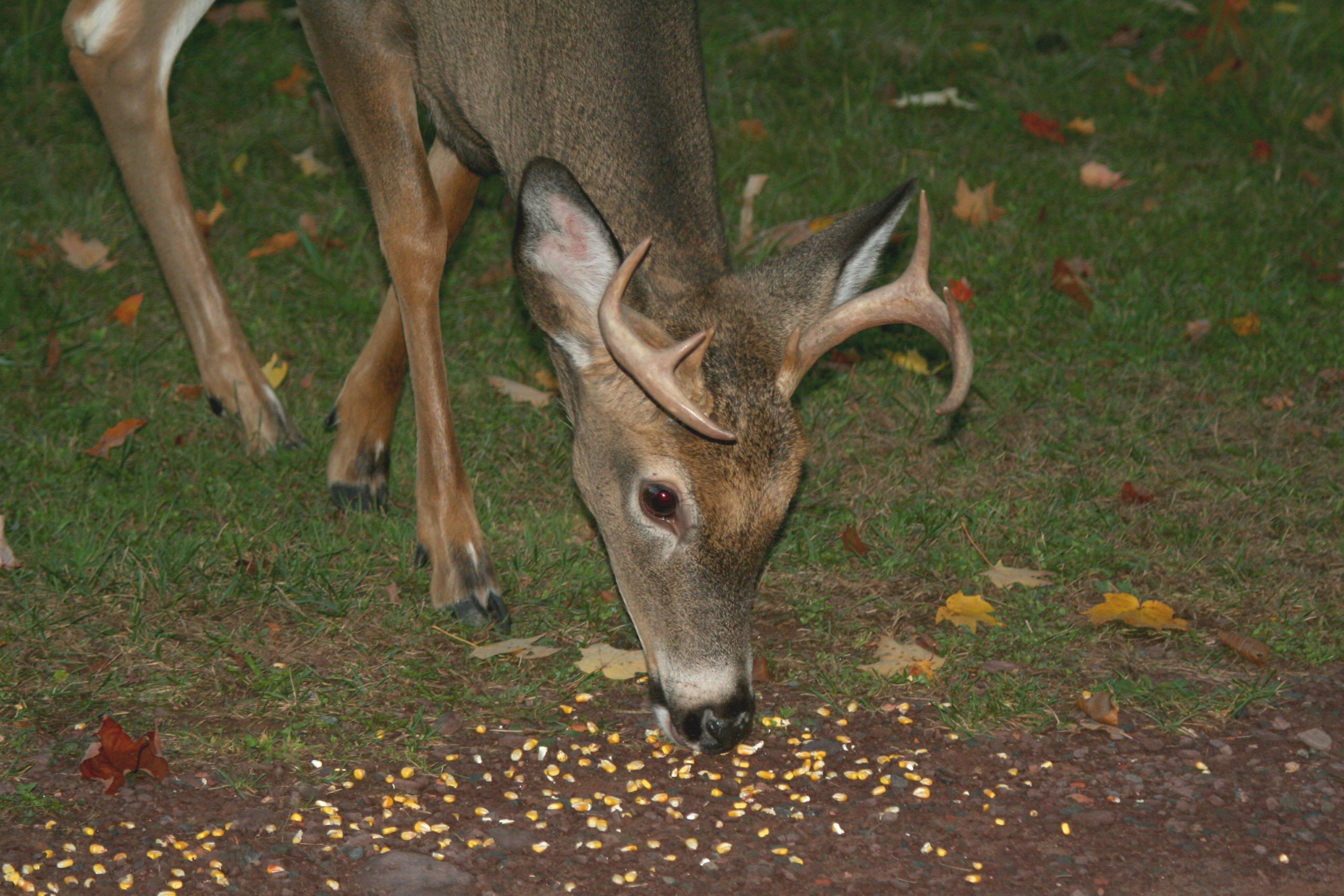
Ultimately, we are not going to tell anyone they cannot bait. I will stand by my statement that I think this tactic is starting to phase out slowly. I have changed my mind on one thing. It is not dying because it is outdated. It is dying because many state agencies are introducing rules against it in their deer management programs in response to disease control. Many baiters will be forced to abandon the tactic whether they like it or not. The alternative is a visit from your local DNR officers and no wants that. Baiting does make sense to a certain degree. For hunters with limited time or those wanting taking out large numbers of feral hogs or draw in bears dispersed over a large area, it may be the only way to get a clean shot.
One unfortunate aspect of bait hunting is the stigma that comes with it, even when it is legal. Some hunters will rack their fellow sportsmen and women over the coals if they find out that big buck was shot over a corn pile and that is unfortunate. So long as that person is following big game laws, it really should not matter, and it is none of the other hunter’s business. However, I have seen this argument play out a thousand times in hunting groups on Facebook and other social media platforms. It gets even worse if you happen to harvest a video of a successful harvest on YouTube.
Our personal stance is that you should do whatever makes you happy and whatever tactics lead to a clean, ethical harvest. If that means baiting, so be it. At the same time, we encourage hunters to try and step outside their comfort zone and try some new tactics too. You never know, you just may find a new hunting method you like better.
For more outdoor content from Travis Smola, be sure to follow him on Twitter and check out his Geocaching and Outdoors with Travis YouTube channels.
NEXT: THE AXIS DEER AND HOW THEY ARE IMPACTING PARTS OF THE UNITED STATES
WATCH
The post Baiting vs. Not Baiting: The Pros and Cons for Different Game Animals and Locations appeared first on Wide Open Spaces.

